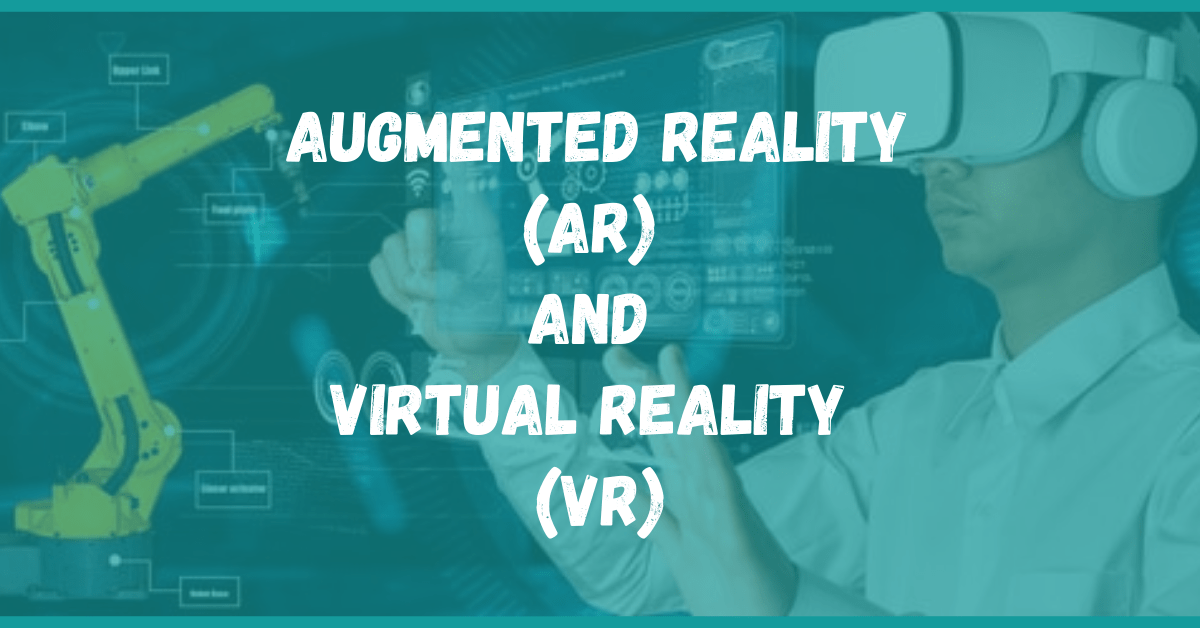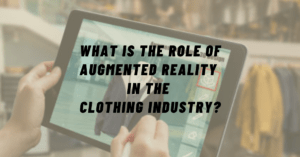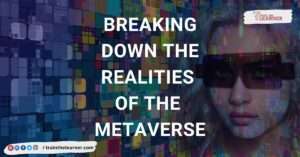Augmented Reality (AR) and Virtual Reality (VR) hold great promise for the future of gaming, marketing, e-commerce, education, and various other industries. Both technologies provide an improved experience that combines virtual and real-world with enhanced 3-D graphics. Although for a non-tech person, the two terms are confusing. There are some important differences between them, which we will cover in the following discussion.
What is Augmented Reality (AR)?
Augmented Reality (AR) is one of the most popular technological trends right now, and it will grow in popularity as AR-capable smartphones and other devices become more widely available.
Augmented Reality is a technology that perfectly reflects digital information on top of the actual environment. Instead of providing a complete practical experience, it enhances the real-time experience in a real-world setting. It uses heads-up displays, smartphones, tablets, smart lenses, and AR glasses and presents pictures, text, and other virtual information.
For example, a spaceship may land in the woods, and dogs chase the ball with cartoons. With advancements in AR technology, these examples are not that different from what you currently have on your smartphones.
Augmented Reality is readily available, and with the interface of several applications, one can also experience it. For instance, AR “Snapchat lenses” help find a car in a busy parking lot. Several shopping apps also allow trying their products online. They provide users with an in-home shopping experience, all from the comfy couch at home.
The mobile game “Pokemon Go,” introduced in 2016 and soon became an irresistible sensation, is perhaps the most prominent example of AR technology. In Pokemon, figures appear in a nearby room, pond, or street. Players track the appeared characters down and capture them later.
Uses of AR
Aside from games, there are as many applications for Augmented Reality in our daily lives; here are a couple of such examples:
- Improved navigation systems use Augmented Reality to overlay a route over a live image of the road.
- During football games, broadcasters utilize Augmented Reality (AR) to put lines on the field to show and evaluate plays.
- IKEA has an Augmented Reality software (named IKEA Place) that allows you to preview how a piece of furniture will appear and fit in your area.
- Military fighter pilots view an Augmented Reality projection of their altitude, speed, and other data on their helmet visor, eliminating the need to squander attention by glancing down.
- Neurosurgeons occasionally use an augmented representation of a 3D brain to help them during surgery.
- AR can project images of ancient civilizations over today’s ruins at historical locations such as Pompeii in Italy, bringing the past to life.
- Ground staff at Singapore’s airport use Augmented Reality glasses to see information on cargo containers, which speeds up loading times.
What is Virtual Reality (VR)?
In the Virtual Reality experience, the computer generates a fake and engaging world for users. The most well-known immersive technology fools your senses into believing you are in a different place or environment. Users become engaged in a computer-generated world of graphics and sounds, manipulating items and moving around with physical controllers—all while attached to a console or PC and utilizing a head-mounted display (HMD) or headset. When a user wears a helmet display (HMD) or a virtual reality (VR) headset, their brains perceive and believe they are moving among virtual things on a screen. The connected headset is usually there with a computer or console to provide a virtual reality experience. Smartphones create the virtual reality experience in Google Cardboard, Samsung Gear VR, and Google Daydream. However, the Oculus Go (an independent VR headset) can do it.
Uses of VR
Many organizations and industries use Virtual Reality applications, including the military, engineering and construction, healthcare, education, business, etc. While gaming and entertainment were early adopters of Virtual Reality.
- It helps surgeons plan operations and training, such as surgical simulations.
- It creates unique experiences for movies and TV. People experience a destination before flying.
- Train soldiers for combat scenarios, Virtual travel for virtual trips to an art museum or another planet, all from home.
- Professional sports training programs such as STRIVR help both professional and amateur players.
- Over 1,000 games, ranging from first-person shooters to strategy games to role-playing adventures, are available.
Difference between Augmented Reality (AR) and Virtual Reality (VR)
Despite their similar designs, Virtual Reality and Augmented Reality accomplish two very different things in two very different ways.
Virtual Reality is an immersive experience in which users leave their real-world surroundings and enter a digital environment using VR headsets. However, Augmented Reality is an experience where the virtual objects are in the real-world environment via Smartphones, tablets, heads-up displays, or AR glasses.
AR users control their physical presence in the actual world, whereas the system controls VR users. VR requires a headgear device, whereas AR. AR requires smartphones. AR improves virtual and real worlds, whereas VR improves a fictitious reality.
What’s our takeaway from the comparison between AR and VR?
They are both powerful technologies that have yet to impact the user. They have the potential to transform how we use computers in the future dramatically. According to some statistics, the AR and VR market could see a rise to $209.2 billion by 2022. The market is at a boom, and if it elevates further, it will provide limitless opportunities for businesses and employment. Through software and hardware development, graphic designing, research, and more, VR and AR are transforming industries.
Hopefully, you’ve found this short explanation helpful. Feel free to leave a comment below and check out Train the Learner – article section for a comprehensive list of articles. For the quick Learning material, check out our Write-up section.
The article is shared by Saad Aslam during Train the Learner’s internship program




